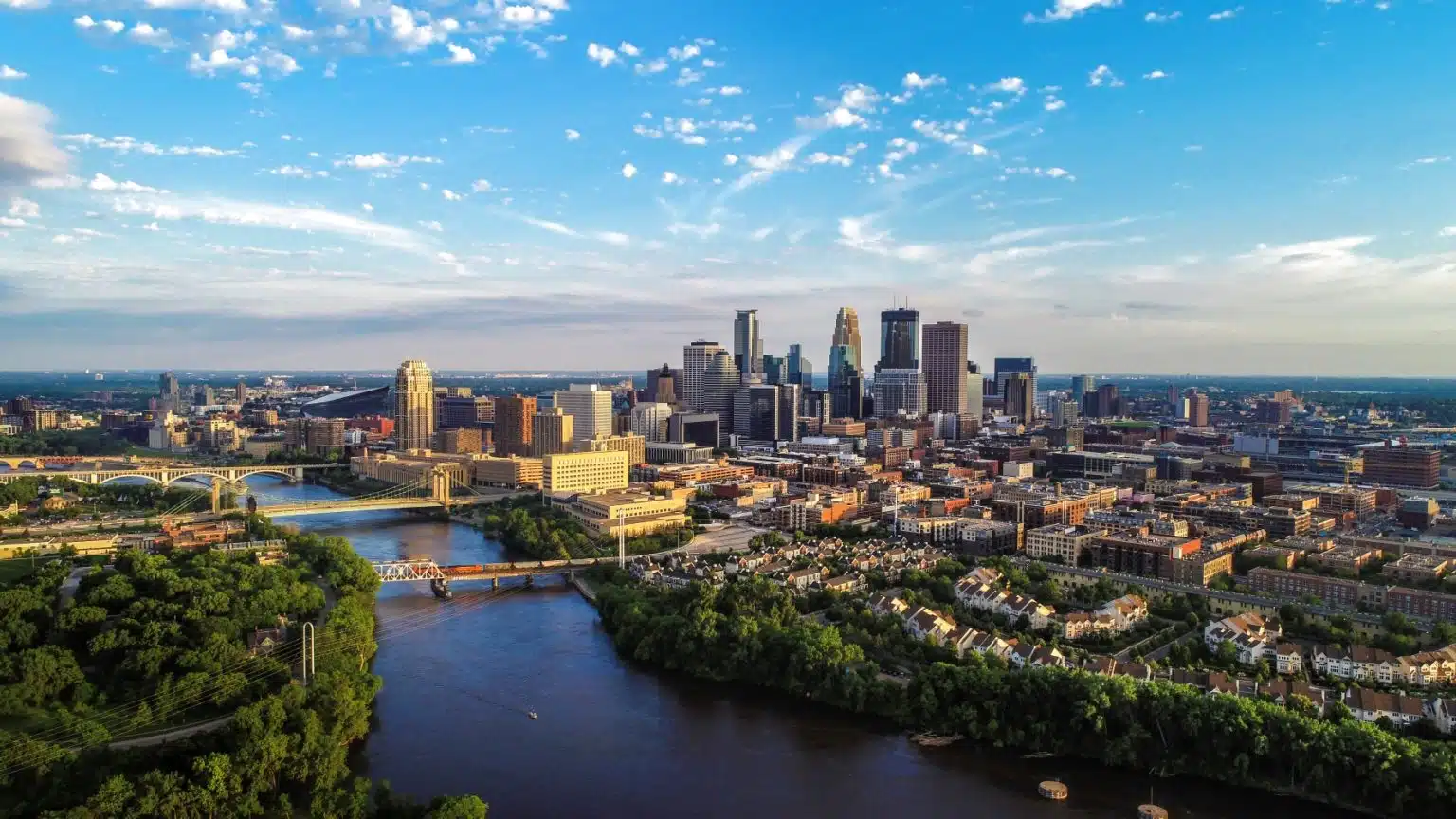
16 Things About Living in Minneapolis You Must Know Before Moving
Minneapolis Minnesota
So you want to move to Minneapolis? We don’t blame you. We love the combination of big-city amenities, good food, history, and midwestern heart that this city has to offer. Heck, we love living in Minneapolis so much that we don’t even mind the notorious winter weather — and neither do residents. They are outside all year, taking advantage of this uber-green city’s many parks, lakes, and culture. And soon, you can be, too!
| Moving to Minneapolis? Start by getting a quote from PODS. |
Minneapolis may be one-half of the famous Minneapolis-St. Paul duo, but we’re prepared to show you how this city stands out on its own. Read on to find out what it’s like living in Minneapolis, MN — just don’t blame us if, by the end, you find yourself asking, "St. Paul who?"
Minneapolis at a Glance
- Minneapolis is located in the central eastern area of Minnesota and is bisected by the Mississippi River. The closest major metropolitan city is Chicago, which is a six-hour drive southeast.
- With a population of over 425,000, Minneapolis is Minnesota’s largest city.
- A growing tech scene and popular university help draw younger residents, putting the median age around 33.
- According to the most recent census information, the population breaks down as 62.7% White, 18.5% Black/African American, 9.9% Hispanic/Latino, 5.2% Asian, and 7.8% of people with two or more races.
| Q: Is Minneapolis a good place to live? A: Wondering, “Is Minneapolis a good place to live?” Absolutely! When it comes to twin-cities living, it can’t be beat. In fact, you can easily expect a great quality of life in Minneapolis, with its endless supply of parks and outdoor activities, numerous gorgeous lakes, and mouthwatering food scene — among many other things. |
1. The Cost of Living in Minneapolis Is Probably a Little More Than You Think.
You may be surprised to learn that the cost of living in Minneapolis is a little more than 7 percent higher than the national average. Salaries, home prices, and taxes follow suit and come in higher than average, as well.
- At $1,478, the average weekly income in Minneapolis is nearly 3 percent higher than the national average of $1,432, according to the U.S. Bureau of Labor Statistics (updated February 2025). When you convert that to yearly wages, the average income in Minneapolis is $77,067, and the national income is $74,620.
- The city’s taxes are relatively high across the board, which contributes to the cost of living in Minneapolis. People may avoid paying tax on clothing, but the tax on income (between 5.35 and 9.85 percent; average 7.46 percent), sales (9.03 percent), meals (up to 10.77 percent), and other things like lodging, entertainment, and liquor, more than make up for it.
- Payscale reports the most popular employers in town include Medtronic, Target, University of Minnesota, UnitedHealth Group, Boston Scientific Corporation, and Ameriprise Financial, Inc. Despite the city’s smaller size, it’s home to a large number of Fortune 500 companies.
| Q: What is a good salary to live in Minneapolis? A: A single adult with no children needs to make around $50,000 annually before taxes to have their basic needs met when living in Minneapolis. However, if you want a more comfortable lifestyle, life in Minneapolis will likely require a salary that’s closer to six figures. |
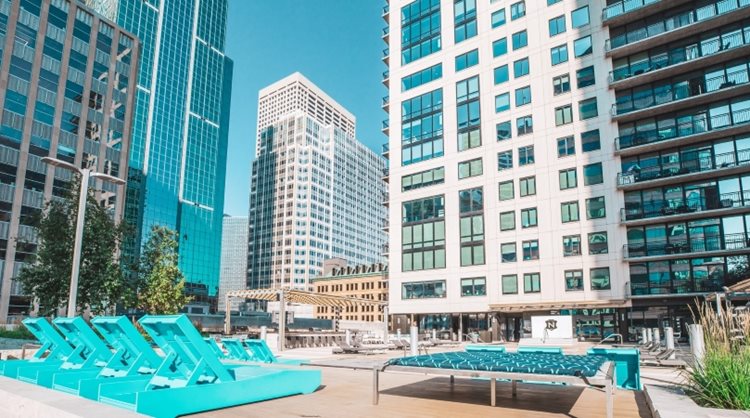
Residents in Minneapolis are almost equally split when it comes to who owns and who rents.
(Source: The Nic on Fifth via Facebook)
2. The City Is Pretty Evenly Split Between Renters and Homeowners.
The areas in Minneapolis tend to be defined by their proximity to downtown. Naturally, the more expensive areas to live in the city will be surrounding the downtown area, where all the action is. Not ready to purchase a home and want to know what is Minneapolis like for renters? According to Niche, residents in Minneapolis are almost equally split when it comes to who owns and who rents, however, a little more than half of residents rent.
One-bedroom apartments run around $1,650 a month, and you can expect them to be about 780 square feet, on average. On the other side of the coin, Zillow puts the average home value in Minneapolis at $318,600.
3. Here Are the Top Three Best Neighborhoods To Live in Minneapolis.
Asking yourself, “Where should I move to in Minneapolis?” Well, when it comes to living in Minneapolis, here are three areas that consistently rank among the top choices with real estate pros and residents:

Living in Minneapolis is great when you call Loring Park home — it has a family-friendly vibe and tons of gorgeous green space.
(Source: Loring Park Art Festival via Facebook)
Loring Park
Living in the downtown-adjacent Loring Park gives you great access to the city’s annual events and festivals, a chill family-friendly vibe, and some seriously stylish greenery. Along with the actual park (complete with a large, lovely pond), Loring Park is where you’ll find the Minneapolis Sculpture Garden, one of the largest urban sculpture parks in the country. It’s also home to the Walker Art Center, has a free bus that runs down Nicollet Street, and is packed with excellent eats.
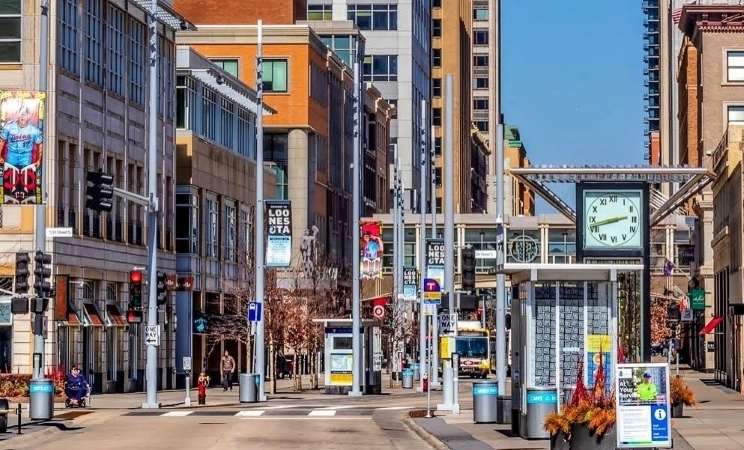
If you’re searching, “Where is MPLS?” you’re likely thinking of the Central Business District — that’s where you’ll find bars, clubs, restaurants, shops, live music, and more.
(Source: @nanc22 via Instagram)
Central Business District
The heart of the city beats strong in Minneapolis’ Central Business District. It’s where you’re likely to start and end the night, and it’s best for folks who thrive in commotion, don’t mind city noise, and want to be within walking distance of many places. You’ll find bars, clubs, and restaurants throughout, as well as numerous theaters, live music venues, and shops — not to mention lots of one-way streets.
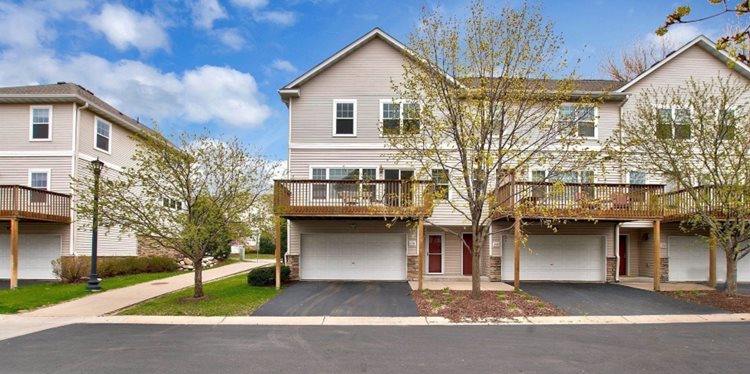
In the Northeast neighborhood, you’ll find the coexistence of old and new Minneapolis, from cobblestone streets to modern amenities — which is part of the beauty of living in Minneapolis, MN.
(Source: Point2homes.com)
Northeast
Split into two distinct sections — the Arts District and Riverfront District — the Northeast neighborhood is where you’ll find the coexistence of old and new Minneapolis, as well as a growing number of young professionals. It’s the perfect place for folks who love a little history mixed with modern amenities. You’ll find cobblestone streets, OG businesses, and an overall industrial soul — all right alongside smooth paved roads, hip breweries, and local art galleries. Plus, it straddles the Mississippi River, which makes for some stellar sunset views.
A Few More Good Spots To Add to Your Minneapolis Home Search:
- West Bank
- Dinkytown
- Uptown
- Linden Hills
- North Loop
4. Crime and Safety Are Serious Concerns in Minneapolis.
Is Minneapolis safe? Like any major metro, the city has its share of crime. And while few U.S. cities have an overall safety grade lower than Minneapolis’s rating of 1, with 100 being the safest, according to Neighborhood Scout, it’s important to keep in mind that larger metro areas are always going to score differently than their smaller counterparts. Like in all cities, most areas of Minneapolis-St. Paul are considered safe places to live, as crime tends to concentrate in a few areas. You can use this map to compare neighborhoods.
| Q: What is Minneapolis ranked in quality of life? A: Life in Minneapolis is pretty great – and the city has the awards and accolades to prove it. It was recently named the Happiest City in the U.S. and the 18th happiest city in the world by the Institute for Quality of Life. The state of Minnesota isn’t doing too shabbily, either. |
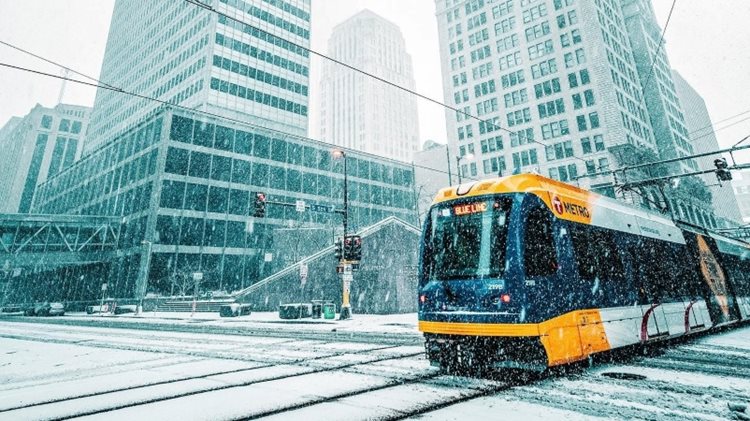
Living in Minneapolis means bundling up and preparing for freezing winter weather — particularly during January, the coldest month.
(Source: The Station on Washington via Facebook)
5. There’s Cold, and Then There’s Minnesota Cold.
Think you know cold? Try living in Minneapolis. Winter temps in Minneapolis don’t mess around, with a high of 24 degrees Fahrenheit and a low of 8 degrees Fahrenheit in January, the coldest month. The coldest temp recorded is from 1936, when it dropped to a blood-freezing -34 degrees Fahrenheit with an unfathomable windchill of -67 degrees Fahrenheit. Still, don’t be surprised if you see some thick-blooded Minneapolis folk donning a T-shirt with no shame or shivers, even when it’s in the 30s.
If you’re not used to driving on snow or ice, make sure your vehicle is prepped and outfitted with the appropriate tires and an emergency kit. You’ll also need the proper winter gear to keep your body warm and dry when you venture outside. However, feel free to break out the shorts and dresses during the absolutely gorgeous and crisp spring and summer months of May through September, when temps range from the high 60s to mid-80s and the sun shines bright.

Folks living in Minneapolis are an outdoors-all-year kind of people.
(Source: Minneapolis Park and Recreation Board via Facebook)
6. Living in Minneapolis Means Experiencing a Year-Round Outdoor City.
Even with the Minneapolis winter temps that would lead others to hibernate inside, you’ll find people out and about enjoying the fresh, frigid air. Folks in Minneapolis are an outdoors-all-year kind of people. In fact, they even have an entire festival devoted to enjoying the chilliest months of the year.
Some other popular activities include ice skating, ice climbing, and ice fishing in the winter; annual harvest festivals and leaf peeping in the fall; fresh farmers’ markets and baseball games in the spring (go Twins!); and barbecues, fireworks, and lake watersports in the summer.
It probably helps that 98 percent of all people in Minneapolis live within a 10-minute walk of a park. Yes, really. Normally, for a city this size, we’d call balderdash, but since Minneapolis is the reigning champ of park systems in the U.S. (there are over 200 here!), we’re kind of inclined to believe it. Plus, the Trust for Public Land isn’t known for fibs.
| Fun Fact: Rumor has it that the beloved Twin Cities moniker did not originally apply to St. Paul, the current city labeled as Minneapolis’s sibling city. Minneapolis was first paired up and nicknamed with the nearby city of St. Anthony. |
7. The Locals Can Be Hard to Crack.
The Minneapolis social scene may be pumping, but locals are known for keeping to themselves — that’s just part of the MN lifestyle. You see, even though it’s a big city, folks stay loyal to their peeps and often hang out with the same people they grew up with or went to school with. “Minnesota nice” may make Minneapolis sound like a place full of cuddly, warm extroverts, but it really means that while people here are courteous, they’d rather be left alone at first.
That said, locals are friendly if you give them time, and you’ll find plenty of fresh faces around town to bond with, too. Need more specific ideas for meeting new people while living in Minneapolis? Consider living close to downtown, which is a hub of activity and has plans for a major revitalization.
| Q: What are the cons of living in Minneapolis? A: If you’re considering living in the Twin Cities, you’d better be prepared for some cold weather. The average high temperature in Minneapolis in January is a whopping 24 degrees Fahrenheit, with a low of a mere 8 degrees. You’ll also want to be aware of the local reputation of “Minnesota nice,” meaning a population that can be a little standoffish initially. And though there are many safe areas in the city, it’s only considered safer than only 1 percent of cities in the U.S. overall, according to Neighborhood Scout. |
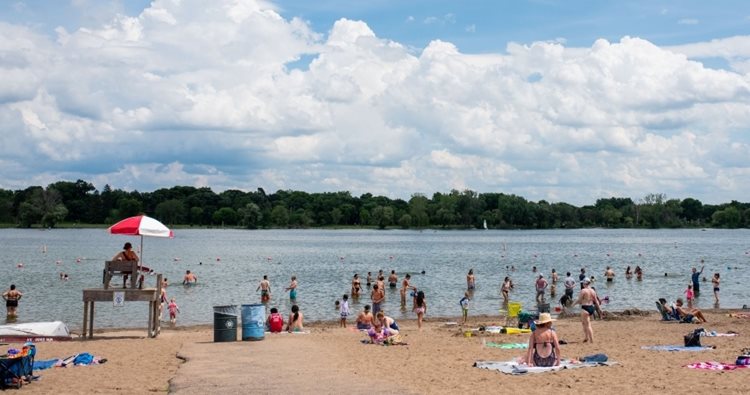
Minneapolis is home to 22 lakes, earning it the “City of Lakes” nickname.
(Source: Minneapolis Park and Recreation Board via Facebook)
8. Minneapolis Is Known as The City of Lakes.
One of Minnesota’s state nicknames is “The Land of 10,000 Lakes” — and it’s not an exaggeration. In fact, there are more like 12,000 lakes throughout the state. While Minneapolis isn’t floating on that many lakes, the city is home to 22 lakes, earning its “City of Lakes” nickname. The city’s Chain of Lakes, composed of the five largest lakes in town, is where most of the action happens — you know, the fun canoeing, hiking, ice surfing (yes, it’s a thing), boating, waterskiing, hockey games, and more.
| Fun Fact: Minneapolis has many more monikers ... the Mill City, MPLS, The Mini-Apple, Miniature-polis, and Pickleville, to name a few. |
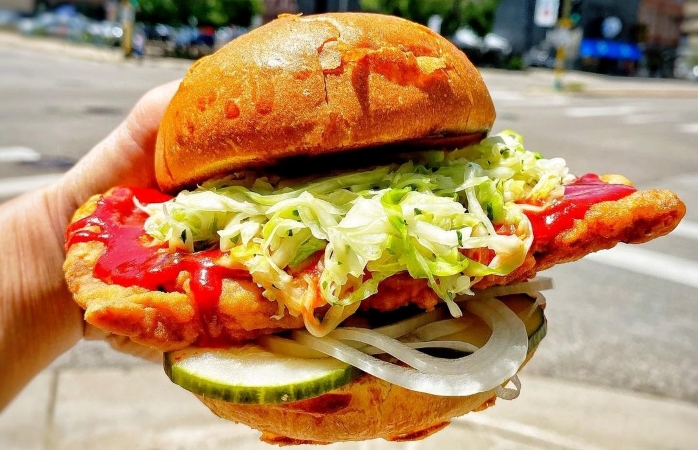
Whether you’re craving Tater Tot Hotdish, a hot chicken sandwich, or James Beard award-winning cuisine, you can find it all when living in Minneapolis, MN.
(Source: Zen Box Izakaya via Instagram)
9. There’s More to the Minneapolis Food Scene Than Tater Tot Hotdish.
No shade to the Tater Tot Hotdish or its fans — the frigid temps of Minneapolis were made for hearty foods that comfort you like a warm hug. However, don’t let the popularity or calorie count of this one dish mislabel the Minneapolis food scene as basic. Minneapolis eats are darn delicious and top-class! You know who agrees? The James Beard Foundation. Christina Nguyen of Hai Hai was named Best Chef: Midwest in 2024, and several top spots are up for 2025 awards.

There are several colleges and universities in the area, including the University of Minnesota Twin Cities in Minneapolis.
(Source: University of Minnesota Twin Cities via Facebook)
10. Schools in Minneapolis Aren’t Stellar, But They’re Still Above Average.
Niche gives Minneapolis’s public schools an overall B- grade, though there are outliers. North Woods Elementary School ranks as the No. 2 best public elementary school in the state, while Nova Classical Academy Upper School is ranked as the No. 2 best charter high school in Minnesota. And as far as higher learning institutions go, U.S. News & World Report put the University of Minnesota (Ski-U-Mah!) Twin Cities at No. 54 on its 2025 Best National Universities list.
Planning a move to Minneapolis?
|
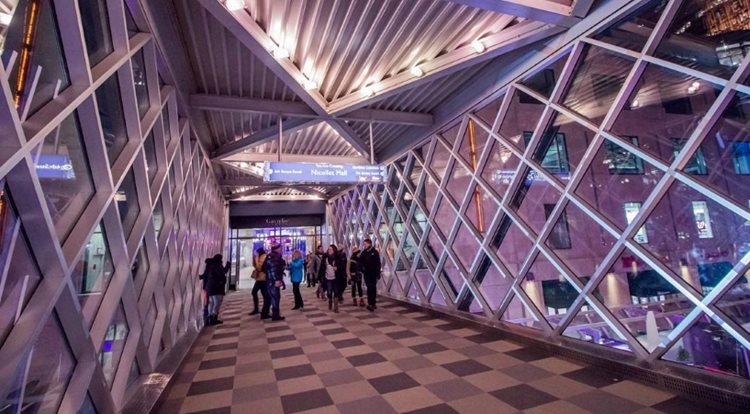
The Minneapolis Skyway System is an expansive series of covered, raised, and connected bridge walkways that allow pedestrians to travel around the city in climate-controlled comfort all year long.
(Source: @abollen via Instagram)
11. You Can Walk Through the Sky (Sort Of).
Most people get around by car, though you don’t absolutely need a car to live here, as Minneapolis walkability and bikeability are both pretty decent. There’s also a reliable public transit network via bus and light rail (though you’ll need to plan ahead or use a rideshare if you’re out and about late at night). If you’re looking for a number to wrap your head around, the average work commute for someone living in Minneapolis, MN, is about 23 minutes.
One super cool and unique way to get around the city? The Minneapolis Skyway System, a large system of covered, raised, and connected bridge walkways for pedestrian use. These elevated pathways connect over 80 city blocks via 9.5 miles of walkways. It’s actually the largest continuous, second-level bridge walkway system in the world — and a godsend in winter.
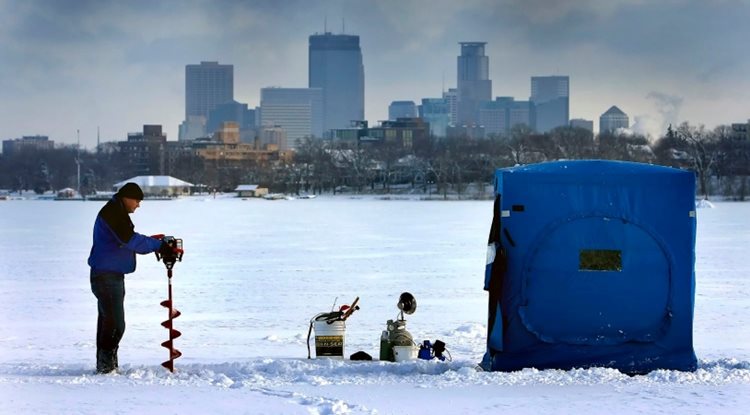
A bonus to the Minneapolis winter temps is hard-frozen lakes, perfect for carving out a hole and casting a line.
(Source: Minneapolis Park and Recreation Board via Facebook)
12. You Can Try a Heart-Pumping New Sport.
One of the most dangerous sports, ice fishing is not for the faint of heart — but it’s kind of a bucket list item for the adventurous. A bonus to the Minneapolis winter temps is hard-frozen lakes, perfect for carving out a hole and casting a line. Just be sure to take safety precautions to protect yourself from falling through the ice, getting hypothermia, or getting frostbite.13. Minneapolis Is a City for Sports Fans.
There’s no two ways about it: Minneapolis is a sports town. Root for the Minnesota Twins at Target Field, go courtside at a Timberwolves game, get riled up at a Vikings football game, or go puck wild while you watch a Minnesota Wild hockey game.
Want to get in the game, but you’re not exactly a professional athlete? That’s OK! Minneapolis offers lots of adult rec league opportunities through their Parks and Recreation department.

The Mall of America is just 15 minutes from downtown Minneapolis and teeming with things to do, from 500 shops and a Nickelodeon theme park to the SEA LIFE Aquarium.
(Source: Mall of America via Facebook)
14. Make an Appearance at the Mall of America.
That’s right, America’s mall is just a 15-minute drive from Minneapolis. Admittedly, this isn’t really something locals clamor to do, but you’ve got to see this monstrous mall at least once. The place is so big, it has its own zip code!
Inside, you’ll find more than 500(!) stores, an indoor Nickelodeon theme park, a Rainforest Cafe, Margaritaville, and so much more. Expect to get your steps in walking around all day, embrace the camp, and fill up your shopping bags.
15. Here Are 7 Can’t-Miss Things To Do in Minneapolis.
Looking for more reasons to move to Minneapolis? Here’s a list of the top 7 things to do in Minneapolis that you don’t want to miss.
1. Catch a Live Theater Show.
Minneapolis has one of the liveliest and most robust theater scenes in the country, so take advantage by catching a production (or several) at one of the many local theaters.
2. Go for the Gamble.
Put it all on red just outside of town at Minneapolis’ two casinos, the Mystic Lake Casino and Little Six Casino. Why go to Vegas when you can be your best James Bond right in your own backyard?
3. Hit Up the Country’s Largest Open Studio Tour.
Every May, Minneapolis hosts Art-A-Whirl, a weekend-long art walk in the Northeast neighborhood where hundreds of studios, galleries, shops, and individual artists open their doors to the public for tours.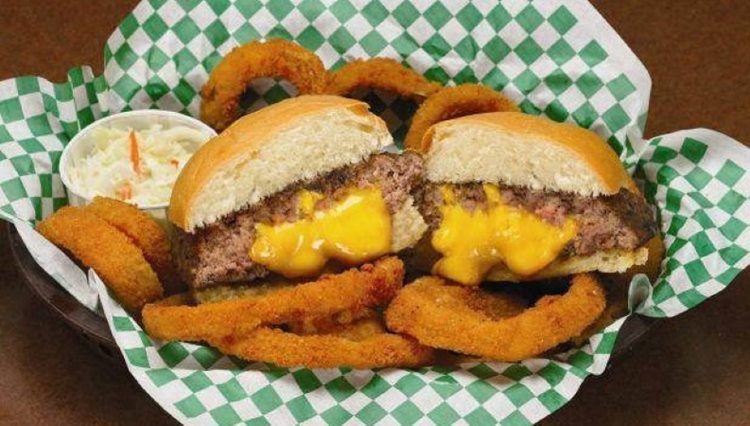
If you’re looking to try a chin-soaking, cheese-stuffed burger, look no further than the Jucy Lucy, a Minneapolis staple.
(Source: Meet Minneapolis via Facebook)
4. Sink Your Teeth Into a Jucy Lucy.
Perhaps rivaled only by the Tater Tot Hotdish, this chin-soaking, cheese-stuffed burger is a staple in Minneapolis — and the place to grab a bite is Matt’s Bar and Grill in South Minneapolis, where it was invented.
5. Take Your Stomach Cruising Down Eat Street.
Not sure what you feel like eating? Let your stomach be your guide down the 17-block Eat Street, where you’ll find over 50 different places to satisfy nearly any craving and solve even the most stubborn bouts of indecisiveness.
6. Take an Architecture Tour.
Minneapolis is full of gorgeous, historic architecture, and these tours will not only widen your eyes, but they’ll also give you a little background on your new town.

Kayaking on the Mississippi River is the perfect way to spend the day when you’re living in Minneapolis.
(Source: Meet Minneapolis via Facebook)
7. Mess Around on the Mississippi.
Frolicking in the most famous river in America is a popular pastime, so join in on the fun. Go on hikes, chase the rumble of a waterfall, sunbathe, fish, picnic, paddle, and more — just don’t take this smack-in-the-middle-of-the-city natural waterpark for granted.
16. Is Living in Minneapolis Better Than St. Paul? Is Minneapolis Safe Compared to St. Paul?
If you are considering living in the Twin Cities but you’re stuck between the two, here are some stats to help you get an overhead view of where you may want to live.
- St. Paul’s population (about 3111,000) is smaller than Minneapolis’s (about 425,000).
- The cost of living in Minneapolis is 5 percent higher than in St. Paul. In fact, living in Minneapolis means paying a bit more for housing, groceries, and utilities.
- Is St. Paul or Minneapolis safer? St. Paul is considered safer than Minneapolis, per Neighborhood Scout data — St. Paul has a crime index of 6, Minneapolis’ is 1.
- Overall, St. Paul schools are right on par with Minneapolis schools — Niche gives both cities' public schools a B- grade.
- Rent is a tad cheaper in St. Paul compared to Minneapolis. The average rent in St. Paul is about $1,475 for 797 square feet, while the typical Minneapolis rent is about $1,650 for a slightly smaller apartment.
- The average home value in St. Paul (about $281,800) is a good $36,800 below the average Minneapolis value ($318,600), too.
PODS Can Help You Move to Minneapolis
Whether you’re moving locally or from another state, you can make it a flexible move with PODS. Have a portable moving container delivered right to your driveway for convenient packing and loading. Once you’re ready, it’ll be picked up and delivered to your new home in Minneapolis. The best part? One month’s storage is built into every move, so you can move at your own pace without feeling rushed.
Get a head start with our handy Moving Checklist and time-saving Packing and Moving Tips. We wish you the best of luck on your upcoming move, future Minneapolitan, and hope you enjoy getting to know your new city!
Alex Keight is a frequent contributor to the PODS Blog who has moved 20+ times because she loves to experience new places.
Editor’s note: For ease of reading, monthly rental prices were rounded to the nearest $25 and home values were rounded to the nearest $100.
Related Articles
Comments
Leave a Comment
Your email address will not be published. Required fields are marked *
